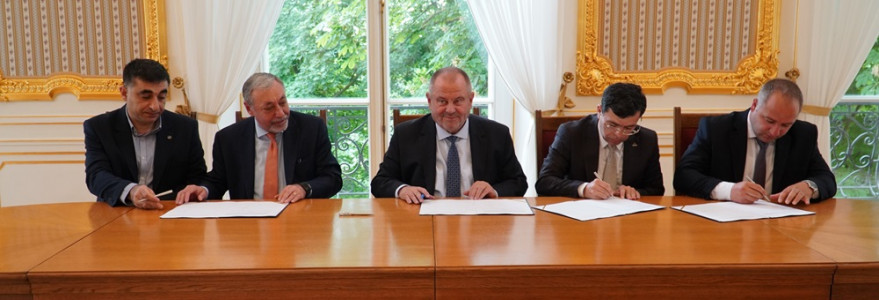A group of representatives from archaeological institutions from Armenia visited the University of Warsaw. They signed an agreement on cooperation and conducted lectures and archaeological workshops.
The University of Warsaw was represented by Prof. Alojzy Z. Nowak, the Rector of the University of Warsaw, who signed the agreement. On the Armenian side, the signatories were Dr. Arsen Bobokhyan, the Director of the Institute of Archaeology and Ethnography at the National Academy of Sciences of the Republic of Armenia, Dr. Karen Pahlevanyan, the director of the National Museum of Armenian Ethnography and History of the Liberation Struggle, and Armen Hovhannisyan, the Director of the Service for the Protection of Historical Environment and Cultural Museum-reservations. The Ambassador of Armenia to Poland, H.E. Alexander Arzoumanian, also attended the ceremony.
In addition to the cooperation agreement between the institutions, an annex was signed regarding joint research work at the Davti Blur archaeological site. It is one of the hills hiding the remains of the ancient site of Argishtihinili, one of the main centers of the Kingdom of Urartu, a regional power from the 9th to 7th centuries BCE. Among the scholars included in this project are, among others, Dr. Mateusz Iskra from the Polish Centre of Mediterranean Archaeology, UW, and Hasmika Simonyan from the Institute of Archaeology and Ethnography, National Academy of Sciences of the Republic of Armenia.
During the visit, Armenian researchers presented lectures on archaeobotanical research in the South Caucasus and an archaeological workshop showcasing the results of research on Iron Age ceramics from Armenia.
The agreement paves the way for a second Armenian-Polish archaeological project involving the PCMA UW.
Read more about Polish-Armenian archaeological research at the Metsamor site: Metsamor
Polish-Armenian workshop: Pottery production, distribution and use during the Iron Age in Armenia
Open lecture: Overview of agriculture and food consumption in the South Caucasus during prehistory

